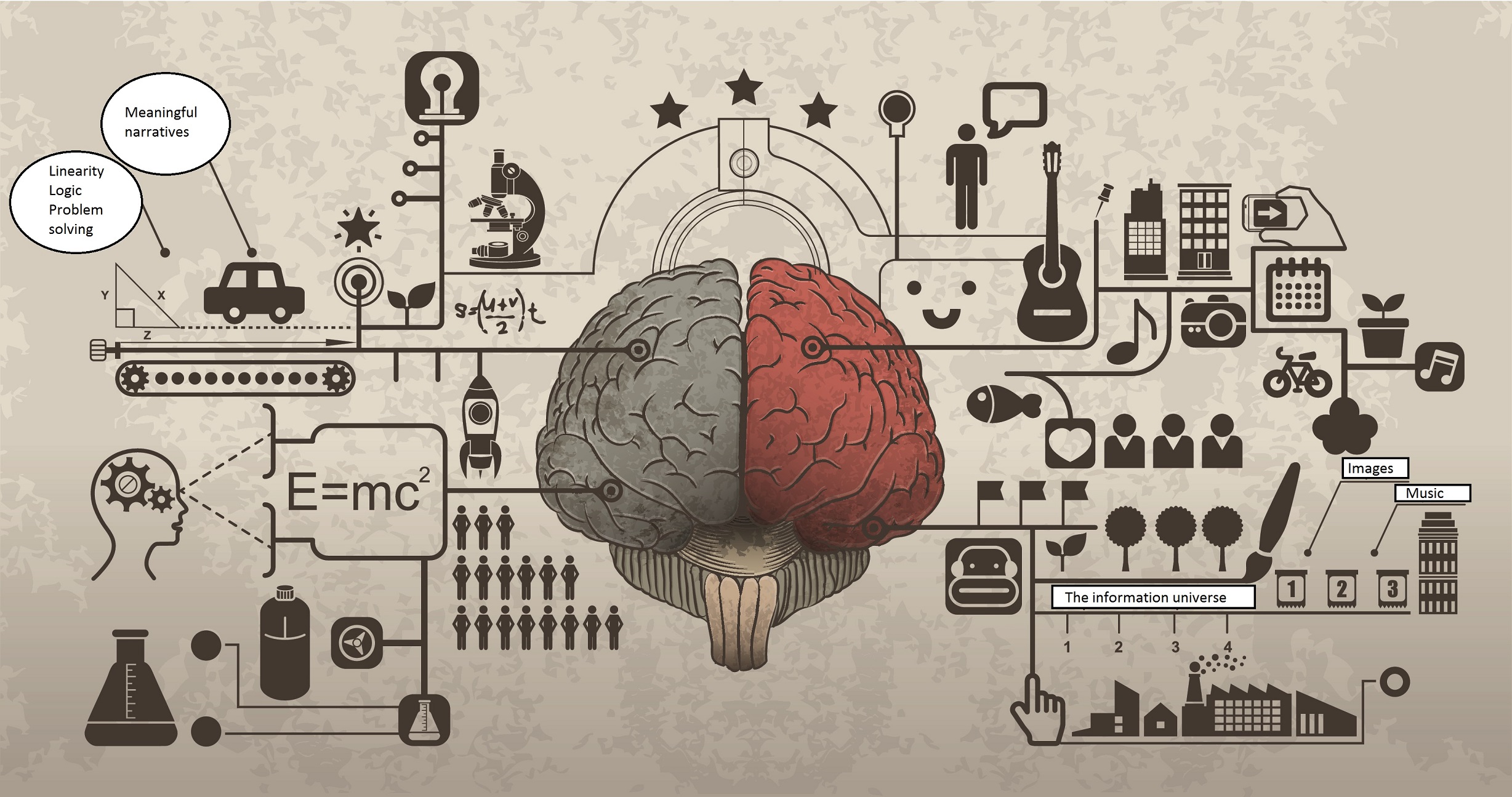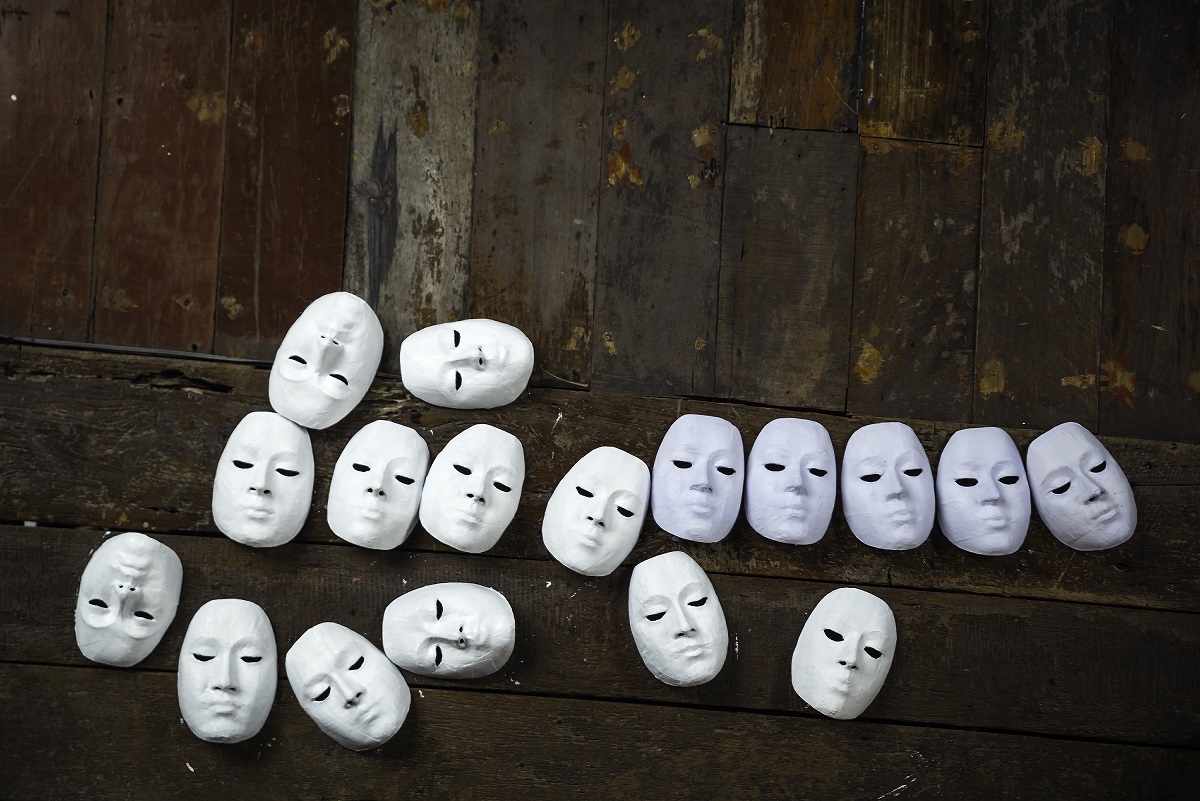
A basic albeit lucid grasp of the neural mechanisms underlying human consciousness is essential if we are to better understand the influential role of beliefs in creating our reality. Following in the stead of the conscious states that it articulates after development, the central nervous system is subject to the eternal squabble, the see-saw battle between the supplementary forces of nature and nurture. I believe there hasn’t been a biological system in geological history that has escaped this earthly law. So what about nature and nurture? As any geneticist would gladly point out, the synthesis of template proteins responsible for the general size and location of the brain; the brainstem, cortical, and subcortical regions and pathways; the reflexes; and the central and peripheral nervous systems are all bequeathed by our genotype. These are inherited constants of our phylogenetic evolution and cannot be altered, save when congenital abnormalities like mental retardation, cerebral palsy, and autism abound. Though varying from person to person in outward appearance, the sluggish development of the external layered structure of grey neural tissue, the cerebral cortex, is also mediated by encoded genetic information.
Alternatively, the phenotypic regulation and expression of genetic material is all left to nurture, or more specifically to a transcription function that is experience dependent. Polar extremes afforded by the physical and socio-political environments–conditions whereby we find ourselves malnourished or well-fed, desolate and void of cerebral challenge or intellectually stimulated, chronically stressed or empathically nurtured–program our nervous systems in ways that have far-reaching consequences on cognitive and emotional development, and thus our capacity to adapt, change, and orientate the conscious self to a transitory and ever-changing world. Evidence for the brain’s neuronal and social plasticity, its inherent capacity to wire and rewire cortical apparatuses so that they accord with specific environmental conditions, can be seen in the drawn-out development of the prefrontal cortex which doesn’t reach maturity until the terminal stages of the second decade of life. The social brain is very malleable when it comes to the endless array of external contingencies it must endure, subsist, and network with; it will resort to unconventional austerity measures in its plight to preserve a unified higher-order consciousness from noxious and hostile influences. It will even allow the pathological dissociation of cortical and subcortical systems responsible for memory, emotion, cognition, affect, and behaviour if it means saving the biological organism from self-annihilation. We’re built to survive, and a prerequisite of survival is the ability to manage and manoeuvre within restricted perceptual fields far removed from the true affluence and scope of human experience. I highly doubt that there’s anything more proficient at this, the crudest of defence mechanisms, than the human brain.
As we know the cerebral cortex is comprised of two halves called hemispheres connected by a bundle of nerve fibres called the corpus callosum. In some animals the functional capacities of the hemispheres are identical but in humans they have evolved in a lateralized fashion, meaning that they encounter reality and process information in dissimilar ways. Scientists delving into the particularities of split-brain physiology have established that some functions are performed with greater comprehension and efficiency in the right hemisphere and others in the left; that the right hemisphere controls the left side of the physical body and its counterpart the right; and that, barring some variability based on right or left-handed bias and sex, individuals will express left brain dominance. At first, the incompatibility and awkwardness of two dissimilar hemispheres seems rather substandard to an innovation like hemispheric duplication that affords its owner safety cushions in case of an unprecedented redundancy, however upon deeper reflection it becomes patently obvious that the opposite is true. Having become a signature characteristic of the human brain through the painstaking evolutionary process of natural selection, the functional dissimilarities and specialization allow for enhanced intellectual sophistication through neural complexity. They also solicit the manifestation of two separate wills that integrate in the first decade of life to produce a multidimensional sense of self with fully integrated conscious linguistic and physical emotional faculties. It’s safe to presume that both these phylogenetic innovations are absent from mammals and other animals whose experience of the information universe is restricted to primary consciousness.[1]
The interconnectivity and synchronization between the maturing hemispheres is at first rather erratic, allowing for autonomous functioning. It takes roughly ten years for the corpus callosum to bridge the two and establish some level of transcortical democracy. But even when such has come to pass, there will be times when responses to the environmental milieu are blatantly incongruous, as if there were two different personalities inside one’s head. The left hemisphere is the domineering and self-righteous physicist. He enjoys keeping his cognizant self busy by problem-solving, speaking out aloud, or launching himself into multiple relationships for the sake of constructing coherent narratives that build and orientate his delicate and prideful ego in a chaotic and unsympathetic universe. On the other hand the right hemisphere is the intuitive and bashful artist. While she doesn’t as much as utter a phoneme, she comprehends the emotional, prosodic, and nonverbal aspects of language and possesses an inherent talent for reading body language. Her creative prowess encompasses such things as the transcription of universal information into symbols, codes, and mythopoetic images; the ability to sing and comprehend rhythm and beat; and a natural talent for self-expression through kinaesthetic movement and dancing. The latter is most likely an epiphenomenon of her proximity to cortical centres with stored representations of the physical body. Her visual-spatial abilities are second to none. She is intimately connected to the information universe and knows things about the world that her Newtonian and quantitatively-minded counterpart could only dream of. Naturally he himself ensures that the vast majority of this information never bubbles up to conscious awareness by auditing and filtering out anything that isn’t necessary for survival.
Their vibrant synergy resembles holy matrimony or marriage with both partners trapped in an inevitable deadlock, a state in which one half secretly wishes to gain ascendency and ontological high ground over the other half. For the respective individual to whom they belong, the ongoing neurological quarrels may manifest as psychological tussles between the moral intellect and carnal body, logic and emotion, machination and impulse, or the pragmatic and romantic self. Whereas previously we were complacently whole, now we find ourselves seized, possessed, and usurped by a transitory albeit ambivalent state of “split mind.” We could probably even call it a non-pathological episode of psychosis. There are suddenly two conscious wills within, each tugging towards a different direction and demanding blind obedience to its cause. One wishes to continue professional networking with associates and building rapport with companies and the other wants to play the mandolin; one wants to chatter away on the phone with a friend and the other wants to complete an oil canvas of a supernal Californian seashore; one wants to meticulously plan activities for the school holidays and the other wants to dance stark naked in the summer rain. If the inner conflict continues without repose we can invariably find ourselves spiralling down into a mental inertia or involuntarily engaged in embarrassing faux pas as we commit verbal and kinaesthetic gaffes and then attempt to redeem ourselves by declaring, “It wasn’t I who just said that!” and “It wasn’t I who did that.” By now you should be mindful of the fact that both left and right hemispheres are coordinating protagonists who conspire to establish our realities, and that any robust and ongoing disagreements between the two can bring these supple sandcastles crashing down like the Biblical Tower of Babel.
Humans come into the world with a cerebral cortex that is relatively immature. Up until the age of about two, the proliferation of long-distance axon pathways, the formation of synaptic connections and dendrites and their subsequent pruning–indeed all the cortical and subcortical developments that interpersonal learning and experience might facilitate during that slice of time–is localized in the right hemisphere. What does this mean? It means that an infant’s sensory perceptions and sensorimotor activities, her hand-eye coordination and inaugural movements like crawling and walking, will occur via interpersonal relations where the manner of communication is primarily nonverbal and emotional. During this critical period all behaviours expressed slope steeply towards survival. Stimuli that attract to themselves a negative appraisal, for example anxiety caused by separation from a maternal figure, encroachment by a stranger, or physiognomies that appear wretched or distraught demand immediate attention because they hold sway on self-preservation.
The more we think about it, the more we understand that the earliest social and emotional processes would exhibit an instinctive predisposition towards the negative–negative appraisals increase our chances of survival in an often hostile and unpredictable milieu. It makes perfect sense to hold onto them. Our primitive brains ensure that these formative sensory and emotional assumptions become a permanent feature of our cerebral hardware by encoding them into a proliferating web of transcortical highways linking the prefrontal cortex with the cerebellum, thalamus, and parietal cortex. Because all this cognitive programming predates the formation of a conscious linguistic self, an ego able to commit to acts of introspection, reflection, and reformulation, is precisely the reason why it goes on to dictate all our future beliefs and interactions without every coming under the scrutiny of the domineering physicist. Lamentably so, it also means that our right hemispheres or intuitive artists are morbidly inclined towards negativity and suspiciousness. We can be fatalistic at the best of times!
Cerebral development shifts to the left hemisphere midway through the second year of life, initiating connections between the maturing dorsolateral regions of the frontal lobes and other cortical networks that make possible language and the synchronization of existing kinaesthetic channels with changing trajectories in both the visual field and spoken word. For the child this is an auspicious and productive time; the emerging aptitudes of language and locomotion are two sides of the key that grant passage into the greater world beyond the recognizable sanctuary of her primary caregivers, a world rife in physical and social synapses and all the raw materials through which an integrated self true to her natural inclinations and talents might be realized. Helping her on this imperative assignment is a left hemisphere evolutionarily designed with an optimistic bent so that it becomes activated each and every time she perceives physiognomies and images resonant with positive sentiments like joy, merriment, and bliss. As the chief petitioner of a linguistic, strategic, and problem-solving self whose existence is contingent on empathic networking and social connectivity, the left hemisphere employs a constructive wiring whereby these experience-dependent goals are allowed the greatest opportunity to come to fruition. Smart, hey?
At any rate the two most important language centres of the brain, Broca’s area and Wernicke’s area, reside in the left frontal and left temporal hemispheres and are responsible for the production and comprehension of speech, respectively. A child’s ability to name objects in the absence of visual cues is permitted by the existence of cross-modal connections for auditory, visual, and tactile information streaming forth from the temporal (i.e. Wernicke’s area), occipital, and parietal lobes. Under the auspices of proliferating neural networks in the left hemisphere, this confluence of multimodal information may be shuttled to Broca’s area where it is systematized and prepared for rational articulation. Hence the recipe for speech! Once the language centres are sufficiently looped into a convergent system together with the frontal lobes internal and external verbalizations become qualitative markers for conscious aspects of a child’s behaviour and affect.
These integrative capacities of the left hemisphere are unparalleled in the phylogenetic history of mammals–they make possible the internal synthesis, recollection, and recitation of stories in chronological fashion. The innumerable stories–the personal and collective myths, legends and folktales–fashioned by our children within the space-time continuum are an immediate outcome of a creative self-consciousness that has differentiated from the ambient white noise and wishes to fathom the reasons for such an interface. Stories upon stories are fabricated to explain ‘why’ and ‘how’ we, our best beloved, and the world came to be. The left hemisphere dislikes disharmony and intellectual tension caused by stimuli and experiences that don’t quite fit the theoretical moulds offered by the stories and will do anything to restore the fundamental order and balance, even if it means resorting to self-deceiving contrivances like confabulations and paramnesias. Filtering conscious experience through pre-existing rules, expectations, and perceptions encrypted in neural vectors of the cortical and subcortical systems is largely a function of the verbal neocortex. This is why the left hemisphere, the governing body of all language centres, is sometimes referred to as “the interpreter”. I, for one, also like to call it “the conditioner.”
[1] Primary consciousness is present in all mammals and involves a fundamental capacity to construct mental scenes. There are some symbolic and semantic capacities but no language.









